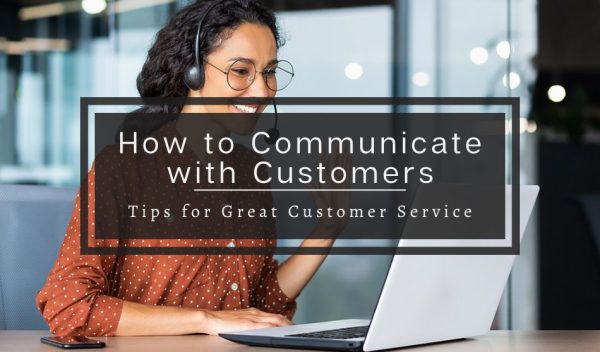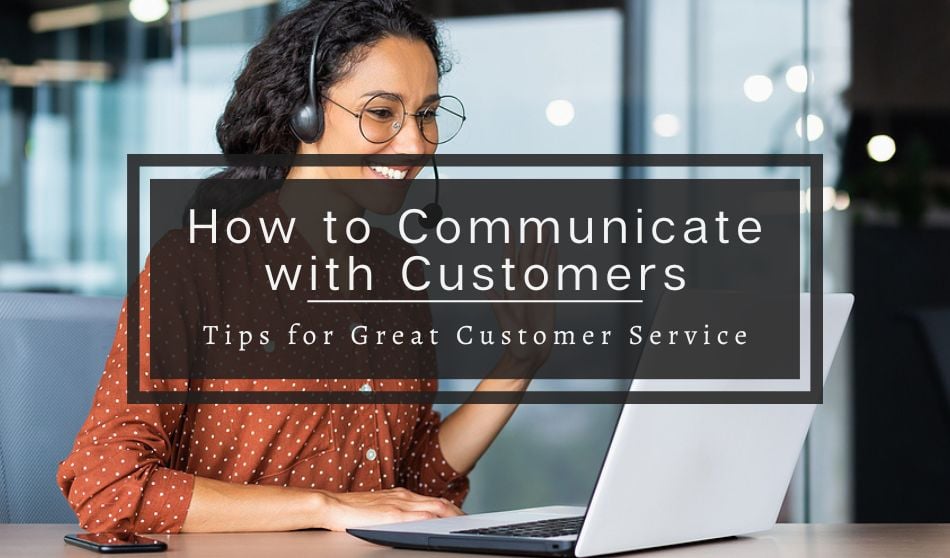
Customer service is vital to business success, and a lot of that service is facilitated through learning how to best communicate with your customers. Customer communication can take many forms, but ultimately it is about what works best for your customers and clients.
Here at Rentec Direct, we prioritize communication with our clients by offering many ways for clients to access important information quickly and efficiently. We have received multiple prestigious awards for our dedication to our client’s experience. Recently, we were awarded the Most Customer-Friendly Company of the Year.
Since customer satisfaction and client communication is so important to our team and our clients, we thought we would share some helpful tips. If you are hoping to improve your client communication strategies and are hoping to make this the year that your clients are happier than ever before, these tips can help.
Traditional Platforms to Communicate with Customers:
- Phone
- Some people want to be able to pick up a phone and get their question answered right away. Offering free phone support is an excellent option for customers who want to build a connection with their client success department and speak with a real person who can view their account in real-time and work through issues together.
- Real World Example: At Rentec Direct, we prioritize a US-based and knowledgeable staff. Staff must be there to ensure that phone calls are answered promptly and that customer questions are answered correctly. We go the extra mile to help our clients by ensuring that the majority of our team has industry experience (formerly property managers, landlords, or a history of working in accounting or banking) before they can move to sufficiently answer client questions.
- Email
- Email is a standard and very convenient option for clients since they can ask a question at any time of day, allowing them to continue with other important work in the interim.
- Real World Example: The Rentec Direct Success team responds to emails in the order received during the same business day while paying close attention to make sure we address the concern, comment, or question. They also provide helpful information and links directly from the knowledge base and educational blog articles. This ensures that the client’s immediate need is met and assists them further by providing added resources to refer back to at any time.
- Chat
- Chat can create a lot of client satisfaction because questions are answered in real-time. Chat is perfect for small one-off queries that don’t require an in-depth conversation and can ensure that clients get the answers they need quickly so they can continue on with their busy days. Response times are often faster with chat options than waiting for an email resolution.
- Real World Example: Rentec Direct uses real people to answer live chat support questions. This makes customers feel valued because the person on the other end can understand the customers’ needs and find a resolution. Rentec Direct offers an average response time of 1 minute so people can quickly receive the support they need.
Alternative Platforms to Communicate with Customers:
Some companies have embraced social media and forums to connect with their customers. Most platforms have direct messaging tools to connect directly with your customers. Additionally, you’ll find customers and potential customers reacting or commenting on content you share on social platforms. While it’s not necessary to host a business profile on every social platform, you should pay attention to your notifications on these platforms so you can respond and engage as needed. Social media is an excellent way to reach your customers, but you may need to redirect them to a different platform (such as email or phone) to troubleshoot any issues or take care of more in-depth questions or concerns.
Supplementary Communication Platforms for Customers:
Remember that to communicate with customers, you’ll need to go beyond direct or traditional platforms and should include resources that allow your customers to access the answer to burning questions before they become frustrating issues.
This means that traditional client communication (like phone calls or email) should be supplemented with other information access options like brochures, knowledgebases, and educational documentation.
- Comprehensive Knowledge Base
- Video Tutorials
- Weekly Webinars
- Educational Blog Articles
- Educational Industry-Relevant Videos
Your clients‘ needs will largely depend on the daily problems they have. Understanding your clients’ day-to-day can help you find the communication platforms that are essential for your industry.
For instance, as a property management software company, we know that our clients–property managers and landlords–are very busy. They wear a lot of different hats during the day and are constantly doing the same documentation for different properties or tenants. That means that our main goal is to help our clients tackle their daily challenges more efficiently–a comprehensive knowledge base and chat help with those goals because our clients’ questions can be answered as soon as possible without the need to take the time to call in for small issues. Phone support is always free and available, but we want to ensure that clients feel empowered by having the answers they need at their fingertips any time of the day.
Customer Service Best Practices:
Every business wouldn’t exist without its employees and customers. As a business owner, it is vital to support your employees and empower them to offer the best service around. Here are some helpful tips that experts recommend to make this happen.
Prioritize employee satisfaction
Attrition and employee turnover will inevitably lead to unsatisfied customers. Knowledgable employees that stay with the company long-term are crucial to ensure that your client communication stays helpful and informative. Even the best employees won’t be at their best when they are unsatisfied with their work environment; ensure that you hire great team members and keep them long-term by prioritizing employee satisfaction.
Educate Your Employees
Employee education can only increase their value to the company and your clients. Clients that are knowledgeable about not just your product but know a lot about your industry as a whole will be a lot better suited to assist your clients. Employees who are knowledgeable and trusted in the industry will inevitably make their customers happier by being ready to answer any question that comes their way.
Provide an Easy-to-Navigate Knowledge Base
Your customers will inevitably have questions, and not all questions will occur within traditional office hours. Providing excellent customer service will require documentation that assists your clients when you’re not readily available to answer questions.
Providing a comprehensive knowledge base can allow your clients to effectively and efficiently get help whenever it is most convenient for their needs. If your product or service doesn’t require a full knowledge base, you should at least provide a thoughtful and informative FAQ section on your website or in a brochure. This can also serve as an educational resource for new employees who are getting introduced to your company.
Give Your Customers the Time They Need
Don’t base your support on a quota. Your client’s time is valuable too, so take the extra few minutes to fully understand and address their needs. This will save your company time in the long run (instead of reintroducing the question multiple times with different team members since the question wasn’t answered the first time).






